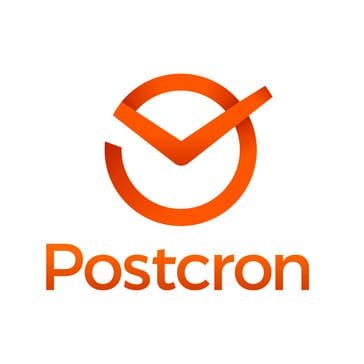Hello Social Media Aficionados! In the digital age, choosing the right tool to manage your social media presence is as crucial as the content itself. Today, we’re tackling a common dilemma: Buffer or Postcron, which is the best fit for your social media strategy? This guide will offer an in-depth comparison of Buffer and Postcron, focusing on their features, usability, and more, all presented in a clear, engaging, and conversational manner. Let’s start by exploring a key factor that often influences this decision: User Interface and Ease of Use.
| Buffer | Postcron |
|---|---|
 |  |
| G2 Score -4.3 out of 5 | G2 Score -4.4 out of 5 |
| TrustRadius Score -8.1 out of 10 | TrustRadius Score -NA |
User Interface and Ease of Use
In the dynamic world of social media, a tool’s user interface (UI) is more than just aesthetics; it’s about functionality, efficiency, and how it meshes with your workflow. Let’s assess how Buffer and Postcron stack up in offering a user-friendly experience.
Buffer: Simplicity and Clarity Combined
Buffer is like that clear, well-marked path in a forest – intuitive and straightforward. Renowned for its clean, intuitive, and user-friendly interface, it’s a favorite among users who appreciate an uncomplicated approach.
Intuitive from the Get-Go
Buffer’s layout is designed for ease of use, making it especially appealing to beginners or those who prefer a no-nonsense approach. The dashboard is straightforward, with well-labeled functions and a clutter-free environment. This simplicity ensures that you can manage your social media accounts efficiently, focusing more on content and engagement.
Streamlined Scheduling
Buffer makes scheduling posts a smooth process. Simply draft your content, attach visuals, select your platforms, and set the schedule. The platform’s calendar view offers an organized overview of your social media plan, making it easy to keep track and maintain consistency in your posting.
Postcron: Detailed with a Tactical Edge
Postcron, on the other hand, is like a Swiss Army knife – offering a range of features but requiring some time to fully master. It’s designed for users who need more than just basic scheduling.
Feature-Rich Interface
Postcron’s interface offers more functionality compared to Buffer. It’s tailored for users who require a comprehensive approach to social media management, including advanced scheduling, content curation, and analytics. While it offers a wide range of features, Postcron maintains a level of user-friendliness, though it may take some time to navigate effectively.
Advanced Scheduling and Analytics
What sets Postcron apart is its focus on providing advanced scheduling options and detailed analytics. It’s a powerful tool for users who base their social media strategy on data-driven insights and need a more granular control over their content strategy.
UI Showdown: Simplicity vs. Advanced Features
Choosing between Buffer and Postcron for their user interfaces depends on your preference for straightforward usability versus a more feature-rich experience. If you prefer a simple, easy-to-navigate UI (Buffer), or if you require a platform with comprehensive features for a detailed social media strategy (Postcron), will guide your decision. Buffer is ideal for those who value quick, uncomplicated social media management. In contrast, Postcron is more suitable for users who prefer extensive features and are willing to navigate a slightly more complex interface.
Content Management and Scheduling: Crafting a Compelling Social Media Presence
Effective content management and scheduling are pivotal for maintaining a dynamic and engaging social media presence. Let’s explore how Buffer and Postcron manage these essential aspects of social media management.
Buffer: Effortless Management for Maximum Impact
Buffer stands out as a straightforward, efficient organizer in the realm of social media tools.
Simplified Scheduling Process
Buffer’s approach to content management is all about simplicity and effectiveness. The process of creating and scheduling posts across multiple platforms is straightforward – write your content, attach media, select the platforms, and schedule. This simplicity is perfect for those who want to manage their social media presence quickly and efficiently.
Visual Calendar for Organized Planning
Buffer’s visual calendar provides a clear layout of your scheduled content, ensuring you maintain a consistent posting schedule. This feature is invaluable for planning out your content strategy, helping you ensure your social media channels stay active and engaging.
Postcron: A Comprehensive Tool for Strategic Posting
Postcron offers a more detailed approach, catering to users who need more than basic scheduling.
Advanced Scheduling and Management
Postcron steps up with features like bulk uploading, auto-posting, and content queues. These tools are excellent for businesses and marketers who need more control over their content strategy, allowing for a more strategic approach to scheduling and content distribution.
Tailored for Dynamic Content Strategies
With Postcron, you have more flexibility in scheduling and can tailor your content distribution to maximize engagement. This is particularly beneficial for users aiming for a strategic and varied content approach, ensuring their social media feeds are not just active but also diverse and engaging.
Choosing the Right Content Management Tool
Deciding between Buffer and Postcron for content management and scheduling depends on your specific needs. If you’re looking for an efficient, user-friendly tool for straightforward scheduling (Buffer), or if you need a more robust platform with advanced features for comprehensive content management (Postcron), will guide your choice. Buffer is ideal for those who prioritize simplicity and quick content organization, while Postcron is suited for users who require a more comprehensive approach to social media content management, focusing on engagement and strategic distribution.
Analytics and Reporting: Gaining Insights for Strategic Social Media Growth
In the realm of social media, analytics and reporting play a crucial role in shaping and refining your strategy. Let’s compare how Buffer and Postcron stack up in providing these essential insights.
Buffer: Intuitive Analytics for Quick Understanding
Buffer acts as a straightforward, easy-to-navigate guide through the intricate world of social media analytics, perfect for those who appreciate simplicity and clarity.
Key Metrics at Your Fingertips
Buffer’s analytics are designed to provide key metrics like engagement rates, post reach, and follower growth in an easily understandable format. This user-friendly approach is ideal for users who want a quick snapshot of their social media performance without getting lost in complex data.
Simplified Reporting
Generating reports in Buffer is a breeze. With just a few clicks, you can compile reports that summarize your social media activities, ideal for quick reviews or sharing insights with your team or clients. These reports focus on the most important metrics, offering a clear picture of your social media impact.
Postcron: Detailed Analytics for In-Depth Strategy
Postcron offers a more comprehensive approach to analytics, catering to users who seek deeper insights into their social media strategies.
Comprehensive Data Analysis
Postcron provides in-depth analytics, covering a range of metrics from audience demographics to engagement trends. For users who require detailed insights to inform their social media strategies, Postcron’s analytics are invaluable, offering a deeper understanding of audience behavior and content performance.
Advanced Reporting for Data-Driven Decisions
A key strength of Postcron is its advanced reporting capabilities. You can create customizable reports that focus on specific metrics relevant to your goals. This customization makes Postcron a valuable tool for businesses or agencies that need to conduct in-depth performance analysis for strategic planning.
Choosing the Right Analytics Tool
Your choice between Buffer and Postcron for analytics and reporting will depend on your specific needs. If you prefer an easy-to-use tool that provides a clear overview of your social media performance (Buffer), or if you need more comprehensive, customizable analytics for in-depth analysis (Postcron), will guide your decision. Buffer is excellent for those who want an immediate understanding of their social media impact, while Postcron is ideal for users who require detailed insights and tailored analysis for strategic planning.

Related: Check out our free SEO suite

Pricing and Subscription Options: Finding the Right Fit for Your Budget
A crucial aspect of choosing a social media management tool is how well it fits within your budget while offering the features you need. Let’s dive into the pricing models of Buffer and Postcron to see which might align better with your financial and social media goals.
| Buffer | Free Plan: Buffer’s free plan includes 3 social channels, 10 scheduled posts per channel, and 1 user. Pro Plan: At $15 per month, this plan offers 8 social channels, 100 scheduled posts per channel, and 1 user. Premium Plan: Starting at $65 per month, offering 8 social channels, 2,000 scheduled posts per channel, and 2 users. Business Plan: Starting at $99 per month for 25 social channels, 2,000 scheduled posts per channel, and 6 users. |
| Postcron | Basic Plan: Starting at around $8 per month (when billed annually), suitable for individuals managing a small number of accounts. Professional Plan: Typically around $29 per month (billed annually), offering more accounts and posts. Business Plan: Priced around $79 per month (billed annually), designed for businesses needing to manage numerous accounts with higher post volumes. Agency Plan: Around $219 per month (billed annually), providing extensive support for agencies with many accounts and the need for bulk posting. |
Buffer: Affordable and Flexible
Buffer is often viewed as the budget-friendly option in the social media management landscape, offering a variety of pricing plans to suit different user needs.
Diverse Plans for Various Users
Buffer’s pricing tiers range from basic options perfect for individuals or small businesses to more advanced plans for larger teams. Each plan is transparently priced, ensuring you know exactly what you’re getting, which helps in making an informed decision based on your budget and requirements.
Free Plan for Basic Needs
Buffer also offers a free plan, although limited in features, which is great for those just starting out or managing a small online presence. It’s a solid option for testing the waters before committing to a more comprehensive plan.
Postcron: Competitive Pricing with Advanced Features
Postcron’s pricing is structured to reflect its more advanced feature set, catering to users who require comprehensive social media management tools.
Tailored Plans for Comprehensive Needs
Postcron’s various pricing plans are designed to cater to a range of users, from solo entrepreneurs to large agencies. The more advanced plans offer extensive features like detailed analytics, bulk scheduling, and more, making it a worthwhile investment for those requiring a more robust tool.
Free Trial for New Users
Unlike Buffer, Postcron doesn’t offer a permanent free plan but provides a free trial. This allows you to explore its features before making a financial commitment, which is beneficial for understanding how Postcron’s advanced tools can enhance your social media strategy.
Making the Best Financial Decision
Choosing between Buffer and Postcron in terms of pricing will largely depend on your specific needs and budget. Buffer is ideal for those looking for an affordable, user-friendly tool, especially suitable for beginners or small businesses. Postcron, with its more advanced features and slightly higher pricing, is targeted towards users who need comprehensive tools for detailed social media management.
Integration and Compatibility: Enhancing Your Social Media Ecosystem
In the world of social media management, the ability of a tool to integrate with other platforms and services is crucial. It can significantly enhance the efficiency and effectiveness of your online strategy. Let’s compare Buffer and Postcron in terms of their integration and compatibility with other systems.
Buffer: Seamless Integration for a Smooth Experience
Buffer is known for its ability to seamlessly integrate with a variety of platforms and services, enhancing its usability.
Wide Range of Integrations
Buffer offers integrations with many social networks and additional tools, including Twitter, Facebook, LinkedIn, Instagram, Pinterest, and Google+. Moreover, it can connect with other apps and services through tools like Zapier, making it a versatile option for those who use a variety of digital marketing tools.
User-Friendly Compatibility
One of Buffer’s key strengths is its user-friendly interface, which extends to its integration capabilities. Setting up and managing integrations is straightforward, making it easy for users of all skill levels to enhance their social media management capabilities.
Postcron: Advanced Features for a Comprehensive Approach
Postcron also provides a range of integration options, but with a focus on more advanced and comprehensive social media management.
Extensive Social Media Platforms Support
Like Buffer, Postcron supports various social media platforms. However, it often provides more advanced features for each platform, such as the ability to schedule posts with multiple images on Twitter or to customize posts for each platform.
Integration with Google Drive and Dropbox
A unique feature of Postcron is its integration with cloud storage services like Google Drive and Dropbox. This allows users to easily access and schedule content stored in the cloud, streamlining the content management process.
Choosing the Right Tool for Integration
Your choice between Buffer and Postcron regarding integration and compatibility will depend on your specific needs. If you’re looking for a tool that offers seamless integration with a wide range of platforms and is user-friendly (Buffer), or if you need a platform with advanced features and cloud storage integrations (Postcron), will guide your decision. Buffer is excellent for those who value simplicity and broad compatibility, while Postcron is ideal for users who need advanced integration features and cloud storage access.
Wrapping UP
After a comprehensive comparison of Buffer and Postcron, it’s clear that each platform offers unique features and strengths, catering to different aspects of social media management. Here’s a summary to help guide your decision:
Buffer is Ideal for its user-friendliness, simplicity, and affordability, Buffer stands out as an excellent choice for individuals and small businesses venturing into social media management. It’s perfect for those who prefer an uncomplicated, efficient approach. With straightforward scheduling, a range of integrations, and a user-friendly interface, Buffer covers the essentials of social media management, making it accessible for beginners and experienced users alike. But, Postcron is For users looking for more advanced features, particularly in content scheduling and platform integrations, Postcron is a strong contender. It offers comprehensive functionalities, including support for multiple images in posts, advanced scheduling options, and integration with cloud storage services like Google Drive and Dropbox. While its pricing might be higher than Buffer’s, Postcron justifies this with its broader range of features and capabilities.





















